In 2008 the London Natural History Society celebrated its 150th anniversary with a conference on ‘London’s Natural History: past, present and future’. I was asked to consider future prospects. What changes might we expect in London’s natural history in fifty year’s time, and what are the prospects for the Society? Whilst I recognised that making predictions about future ecological changes is notoriously hazardous, I soon found that I had more concerns about the future of the Society. With an ageing membership and few young recruits the prospects were not looking good.
So I called my contribution ‘2058: Plenty of wildlife but where are the naturalists?’. If bodies like London’s Natural History Society were to survive it would require a revolutionary new approach and I suggested that this might be possible by means of the Internet. Four years later I am convinced that the Internet is not only crucial to the survival of natural history, but it will bring about a renaissance that offers great opportunities.
Those of us working in urban ecology today owe a great debt to the naturalists of the 19th Century who first investigated the flora and fauna associated with major cities. In the UK there has been a long tradition of botanical exploration which had its origins in the quest for medicinal herbs. Later the blossoming of natural history as part of a wider understanding and popularization of natural sciences led to the formation of numerous societies, from local field clubs to august bodies such as the Royal Society. The enormous growth of interest in natural history at the height of the industrial revolution led to new natural history societies being established in many British towns and cities such as Liverpool, Manchester, Bristol and London.
They were remarkably popular. During the 1860s onwards their field excursions attracted hundreds of participants. Manchester had 550 people attending one such gathering. These societies were subsequently instrumental in organizing the systematic recording of Britain’s natural history, and they produced a wealth of information about nature in and around the cities where their members lived. Amateur naturalists specializing in particular groups of organisms collected most of these records. Their taxonomic approach produced an important legacy of studies relating to individual cities, especially through distribution maps and atlases of birds and plants. Natural history societies were extremely important in documenting and recording the flora and fauna of their local areas, providing a vital template for later ecological studies that cut across taxonomic boundaries.
Britain was not alone. In the City of New York formal study of the flora began with John Torrey’s catalogue of plants in 1819. With creation of the New York (Bronx) Botanical Garden a new initiative was promoted under the aegis of the Torrey Botanical Club to collect plant species from the whole metropolitan area. Many species were collected from localities that have since been developed. Landscapes have changed, and natural habitats have been reduced, but the legacy of these early botanical investigations is still vitally important. John Kieran’s classic 1959 book on the Natural History of New York City could not have been written without the countless army of naturalists and other specialists who knew the intricacies of the city’s wildlife and wild spaces.
Precisely the same was happening in most developed countries. It was a time when individuals could pursue their interests in great depth, secure in the support of friends and colleagues around them in their local societies. These naturalists provided the backbone for our understanding of natural history.
But why does this pursuit of natural history by amateurs matter to present day urban ecology and the management of towns and cities? There are two main reasons. One is the wealth of information already alluded to. It is fair to say that most of what we know about the distribution of species comes from the work of amateur naturalists. The way information has been collected has been progressively refined and most modern studies are done in ways that make them directly applicable to broader urban ecological studies. Without the work of these dedicated naturalists our knowledge of urban ecology would be much reduced.
The second reason is the fact that local naturalists form an important constituency. They are the people who know which species occur where. They can have considerable influence on the planning and management of towns and cities. Their voice is vitally important in a world where large numbers of people are divorced from nature. When we talk about community involvement in biodiversity it is the informed naturalists who are the key players.
Looking ahead I am acutely aware that profound ecological changes will affect cities throughout the world over coming decades. As climate change really starts to bite it will become increasingly urgent to record and measure the biological components of such changes. There will be a continuing role for specialists in natural history, even more so than today; not only surveying, recording and cataloguing flora and fauna, but also alerting decision makers to the ecological consequences of new conditions, including new colonisers, and those that will be lost.
Central to all of this will be a crucial need for amateur naturalists who are good taxonomists.
Yet membership of natural history societies is gradually, but inexorably, getting older. The eminent naturalist Richard Fitter warned of the danger when he said, “if the London Natural History Society fails to recruit younger people to learn identification skills, the Society itself will become an endangered species.” Sadly, as we lose older members their skills and expertise go with them. Every natural history society is faced with the same dilemma. They all have a remarkable body of knowledge and expertise in their ageing membership. We need to capitalise on this great asset for the future. Action is required now to make the most of this expertise in training the next generation.
But it will require a radical shift of emphasis to meet the challenges ahead. First we need to attract younger members into natural history and then train them so that they become proficient naturalists.
But how do we do this?
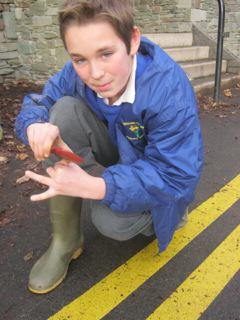
The Internet is now beginning to provide answers. When the LNHS held its conference in 2008 the revolution in social networking was well underway and it already had implications for natural history. The increased use of digital and mobile-phone cameras led to a surge of natural history photography with thousands of people using web sites such as Flickr. Many photographs were posted by people who had relatively little knowledge of natural history, but others added notes confirming or correcting their identifications. The power of the Internet to stimulate interest in natural history was clearly demonstrated and I suggested to the LNHS that it might be used to bring in new blood.
Here was a great opportunity for natural history societies to step in and use their skills. They could aid verification by providing sound taxonomic expertise. A dedicated section of Flickr devoted to London’s flora and fauna might use LNHS specialists as mentors providing comments and guidance. Some initiatives of this kind were already underway. The Open Air Laboratories Network (OPAL) run by Imperial College London jointly with the UK National Biodiversity Network and the Natural History Museum already had a number of schemes up and running, including some in London. They were open to anyone with an interest in nature and were designed to inspire a new generation of field naturalists and at the same time encourage the development of citizen science. It seemed that the LNHS would do well to work with them.
The smartphone is the new butterfly net
The smartphone and apps revolution has transformed the digital landscape over the past few years and with it the prospects for natural history. We now have iSpot, the Open University’s wildlife spotting social network which has grown enormously since it was launched in 2009. It currently has 22,000 registered users who have made over 150,000 observations, resulting in over 7,000 species being identified. Most of these were identified within minutes of photos being posted on iSpot.
It has been said that the mobile phone is the 21st century equivalent of the butterfly net. We are moving into a different world.

Social networking of the kind promoted by iSpot offers the opportunity for anyone with a mobile phone to become a naturalist. It is a new kind of society, linked by a common interest and where beginners feel comfortable. They are encouraged to learn more by gaining credits for their competence. Its not unlike the badges earned by scouts, but here the end result is to produce competent naturalists who may well go on to become the expert taxonomists of the future. Professor Jonathan Silvertown, Director of iSpot, tells me that the results are shared with all the major wildlife agencies in the UK, so not only is it providing a learning opportunity but it also contributes to our ‘official’ body of knowledge. But iSpot is already operating on a much wider geographical basis than the UK and has plans to become a global network.
Why is this relevant to towns and cities? The fact is that most people live in urban areas and that is where young people will find their most immediate contact with nature. They don’t have to go off into the wilds to photograph unusual creatures. Indeed many photos are done with the support of teachers at schools in their local neighborhood. One of the commonest photos on iSpot is a species of ladybird now commonly found in houses and gardens, though it only recently arrived in the UK.
The prospects for community based science programmes are enormous. Mobile phones provide satellite location down to a few metres and the Internet can provide expertise and keys for identification of species. Already there are numerous apps for identifying birds, plants and many other groups of species. New York area parks have an app that can identify plants by taking a photo of the leaves. It has become possible to develop recording schemes using citizen science on a scale never contemplated before. They could be designed to investigate and record biological responses to climate change, using a large number of observers all contributing to the same data bank.
Similarly the public could be encouraged to record the spread of introduced pests and diseases or to catalogue newly colonising species; or simply to map the distribution of popular species in towns and cities. Every city could have an ID app for major groups such as plants, birds, butterflies, dragonflies, and other common insects. The US Department of Agriculture has produced a scheme called Open Tree Map allowing residents to record all the trees in a city. A fine example is Philly Tree Map, which aims to build a total inventory of Philadelphia’s urban forest. The power of the Internet is so enormous it takes us into completely new fields of activity that could be extremely productive.
The approach is very different from anything that natural history societies have traditionally done before, but it gives hope that the pursuit of natural history can be revitalised. It is possible too that the role of specialists or mentors will take on a new significance. Many naturalists will tell you that it was a particular teacher or enthusiast who set them on the road to natural history. The expertise of specialists in natural history societies could be one of our greatest assets in generating enthusiasm among the younger generation. Perhaps some of them will emerge to become Internet celebrities.
Predicting the future is full of uncertainties but we can be sure that the opportunities presented by the Internet have enormous implications for learning about the natural history and ecology of places where people live.
It may even ensure a future for the pursuit of natural history itself.
David Goode
London



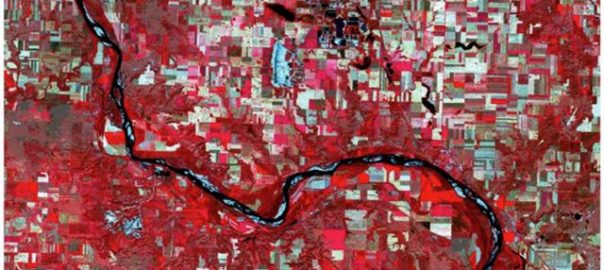
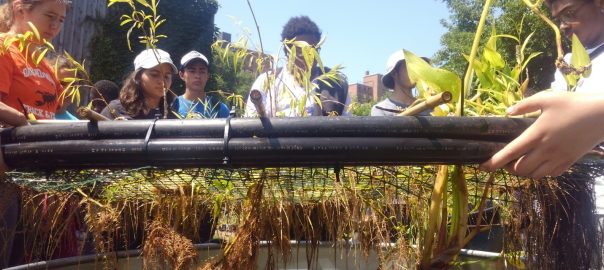
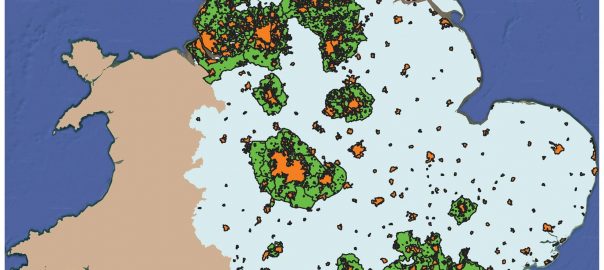
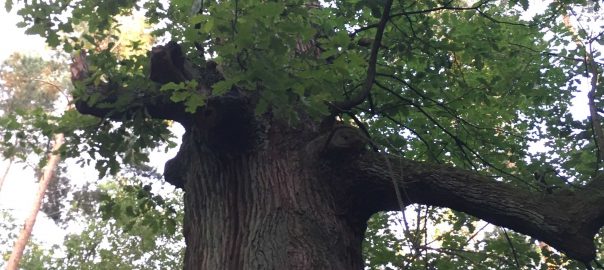
Leave a Reply